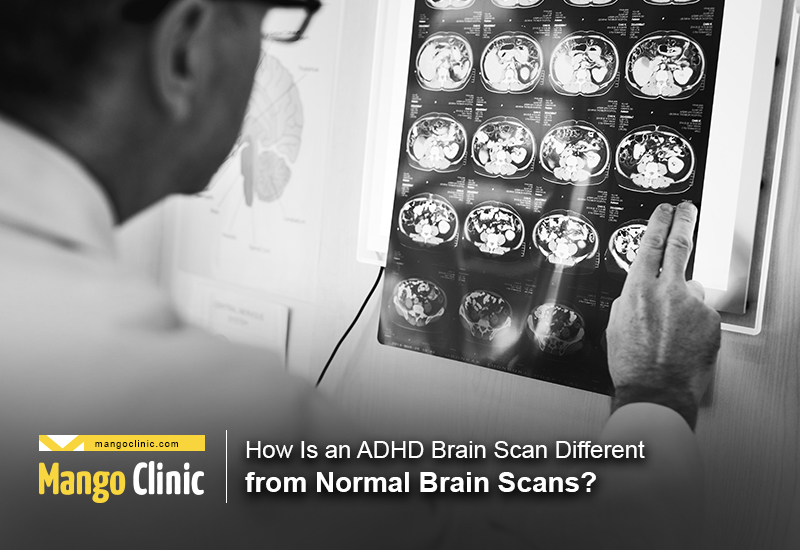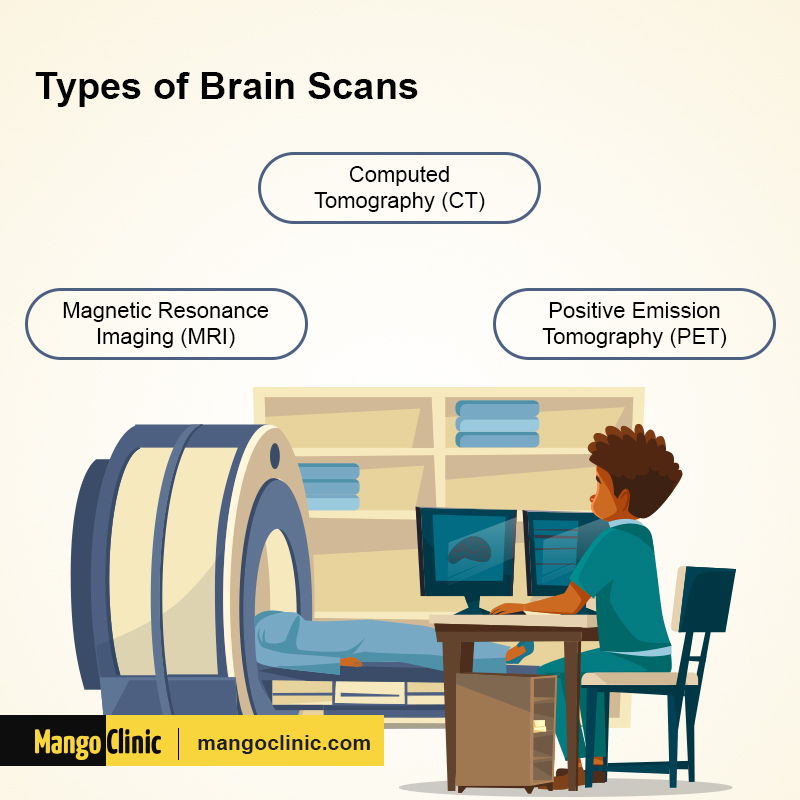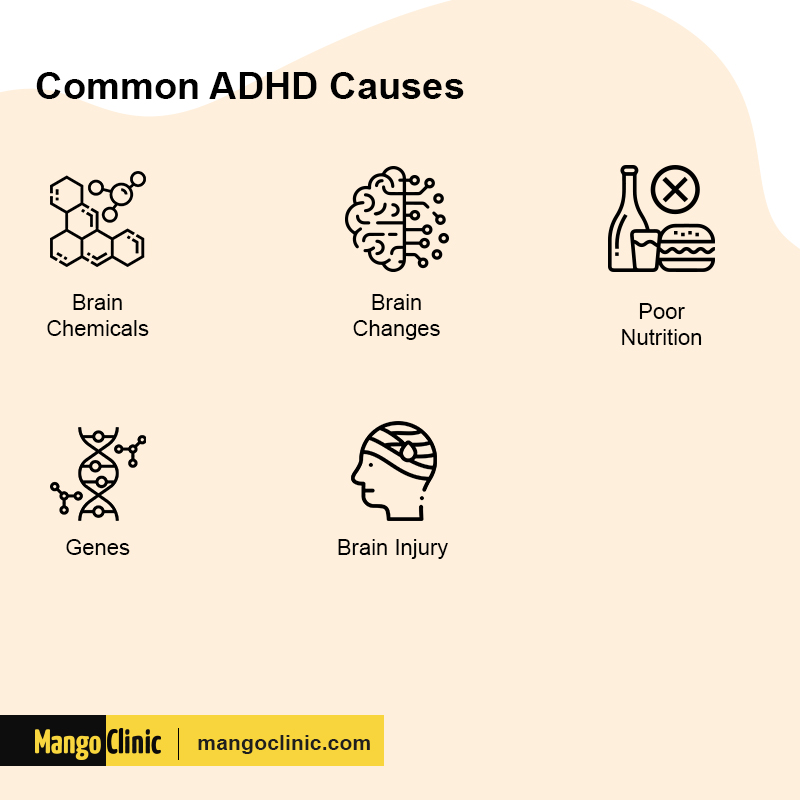How Is an ADHD Brain Scan Different from Normal Brain Scans?

ADHD is a mental condition characterized by symptoms such as inattention, hyperactivity, and impulsivity. While there’s no straightforward test to confirm if you have it, specialists recommend an ADHD brain scan.
An imaging study by the National Institutes of Health (NIH) discovered significant differences in the brains of ADHD patients. Children experience more pronounced mental changes than adults.
Statistics indicate that ADHD affects more than 5% of people under 18 years. Up to two-thirds of kids diagnosed with the disorder persistently experience the symptoms into adulthood.
Get proper treatment for ADHD from mental health experts. Click the button below to book your appointment.
Table of Contents
What Are the Challenges of Diagnosing ADHD?
Diagnosing ADHD isn’t as clear-cut as other medical procedures. Most mental health practitioners require you or your child to fill a survey about behavioral situations. Children may also undergo written or verbal tests.
One of the challenges of diagnosing ADHD is varying symptoms among sufferers. Some children don’t display typical symptoms such as inattention, while others have unique tendencies such as obsessive-compulsive behavior.
Advances in medical technology mean an ADHD brain scan is the best technique for making a proper diagnosis. They evaluate brain wave activity and blood flow to determine whether one has a neurodevelopmental disorder or not.

What Do Brain Scans Show?
An ADHD brain scan is the best option if medical professionals can’t identify the disorder from observable symptoms. Although they can order additional diagnostic tests, they might still provide inconclusive results. In such instances, you may benefit from any of these high tech neuroimaging techniques:
- Single-Photon Emission Computed Tomography (SPECT)
- Functional Magnetic Resonance Imaging (fMRI)
- Quantitative Electroencephalography (qEEG)
- Positron Emission Tomography (PET)
Of these, SPECT is one of the most promising. The 20-minute evaluation identifies metabolically active and passive regions of the brain by measuring blood flow during tasks. However, it’s also controversial.
That’s because it involves injecting your child with a radioactive substance and observing their brain activity while performing tasks. If you want an FDA-approved test to help with ADHD diagnosis, then the NEBA system is your answer.
This biological option records the number and types of waves your brain gives off every second. ADHD patients tend to have higher theta and better brain wave ratios than people without the disorder.
NEBA shouldn’t be a replacement for clinical tests. Instead, it should complement your physical assessment and medical history. If it doesn’t identify ADHD, it can still assist by evaluating conditions such as substance abuse and head injuries. In a study that compared various ADHD brain scans vs. normal MRIs, the former had an accuracy of up to 79%.
Get yourself evaluated for ADHD by mental health experts. Click the button below to book your appointment.
What Are the Differences in the ADHD Brain?
We can classify the differences between ADHD brain and a normal one in three major categories:
1. Brain Structure
Research has shown distinct structural differences in ADHD brains. The most comprehensive study that took place in 2018 determined that the brain volume in ADHD patients is smaller in five subcortical sections.
Their overall brain size also tends to be smaller. The differences are more apparent in children than adults. The hippocampus and amygdala, areas of the brain that influence impulsivity and emotional processes, are also tinier in ADHD patients.
2. Brain Function
SPECT, PET, and fMRI are some imaging techniques utilized in performing an ADHD brain scan. If you have the condition, some parts of your brain experience blood flow alterations.
Decreased blood flow is an indication of lower brain activity. The prefrontal section is responsible for what happens in the brain with ADHD. Its functions include planning, remembering, emotional reactions, and paying attention.
By looking at brain functions and activity, researchers observe a relationship between ADHD and dysfunctional brain connectivity.
3. Brain Chemistry
Your brain consists of a communication network that relays messages between brain cells which are known as neurons. A synapse is a gap that exists between neurons.
The brain depends on chemical messengers, or neurotransmitters, to pass messages between these gaps and the neurons. Noradrenaline and dopamine are the essential neurotransmitters for this particular mental disorder.
One of the differences in the ADHD brain is the dysregulation of dopamine. An ADHD diagnosis could discover too little of this essential neurotransmitter. In other instances, the cause could be inadequate receptors or inefficient use of dopamine. Some prescriptions can trigger increased dopamine production or keep it longer in your synapses.

ADHD Diagnosis
As effective as an ADHD brain scan can be, we can’t use it to diagnose the condition. This delicate process requires a licensed psychologist, psychiatrist, or doctor. Although there’s no clear-cut test for ADHD, the diagnosis includes:
- An exhaustive evaluation of the patient through interviews.
- Assessment of your medical history, school reports, and other relevant documents.
- Tests that determine your memory, attention, and distractibility.
Using the information gathered, your physician can establish whether it meets the diagnostic standards as outlined in the DSM. While MRI scans are crucial for research purposes, they only indicate your brain functions at the time of testing.
Do Brain Scans Have Limitations?
Imaging techniques are relatively new testing options for this type of mental condition. An ADHD brain scan won’t take into account your performance under different situations. That’s why doctors need more information via clinical tests for a comprehensive evaluation.
Additionally, the scanned data collected in group-based studies don’t always apply to individual cases. Although the results might look promising overall, the accuracy may not be as impressive in random settings.
Another limitation concerns a lack of specificity. Most ADHD brain scans vs normal MRIs only compare those who have the condition to those who don’t. They don’t provide additional data that may identify other disorders.
Brain scans also lack standardization. That means we don’t have a customary testing procedure that all professionals can apply for consistent results. As such, they’re not quite ready for extensive clinical use.
Study results are not entirely vital without accompanying information on what the subject was doing during testing. As things stand, current imaging techniques are better for research than for making ADHD diagnoses.
Get medicinal ADHD treatment from mental health experts. Click the button below to book your appointment.
Start Your ADHD Treatment Journey Today
At Mango Clinic, we offer the very best mental healthcare solutions. Other than an accurate ADHD brain scan, we offer a variety of complimentary services. They include stimulant and non-stimulant drugs, same-day ADHD prescription, and customized treatment plans.
Contact us at Mango Clinic for ADHD treatment or click the banner below to book your appointment.





